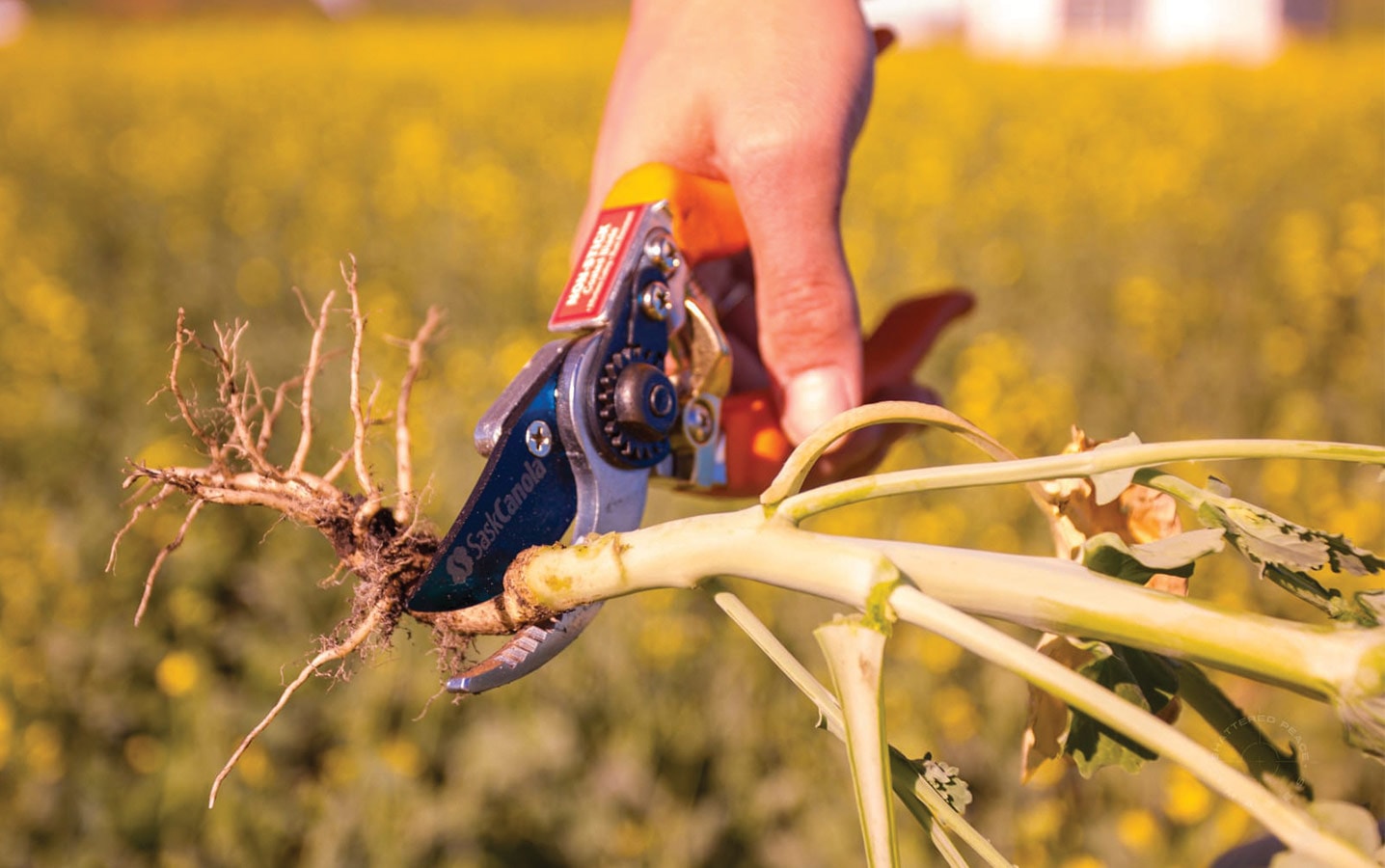Blackleg Summit shares new management approaches
What are the key new research discoveries on blackleg? Blackleg management can get lost among the 50 other important decisions that need to be made to grow just one canola crop, but with the Growing Forward 2 SaskCanola Agri-Science Project: ‘Canola Disease Management Tools for the Prairies – Blackleg and Sclerotinia’ coming to an end, this is a great time to share key findings with producers, agronomists and industry members. The Blackleg Summit held in Saskatoon earlier this year provided an opportunity to review the Agri-Science Project research and help ag extension staff get this information into the hands of farmers.
Key messages presented at the Blackleg Summit
- Rapid field test of canola stubble helps with variety selection. Hossein Borhan’s lab at Agriculture and Agri-Food Canada (AAFC) Saskatoon worked to develop a rapid field diagnostics test for blackleg disease. The test identifies blackleg races present on the canola stubble. Genetic biomarkers developed as part of this project were shared with public and private pathology labs across western Canada. Four labs now have the markers for commercial evaluation. When growers detect significant amounts of blackleg in their field, they can now send stubble samples to diagnostic labs for genetic testing. This enables canola growers to make informed decisions about choosing the appropriate blackleg resistance in their canola variety that best matches the profile of the blackleg strain in the field.
- Survey shows blackleg pathogen population across the Prairies. A collaborative effort was taken across the Prairies to survey and identify the blackleg pathogen population. This effort, led by the labs of Dilantha Fernando (University of Manitoba), Gary Peng (AAFC Saskatoon) and Ralph Lange (Alberta Innovates), will help determine where to deploy specific genetics to match the population, increasing the durability of resistance genes and better managing the pathogen.
- Researchers find new sources and genes for blackleg resistance. More than 1,100 B. napus and B. rapa accessions were characterized for the profile of known R genes (resistance to blackleg). Several novel blackleg resistance genes were identified, which seed companies can use to improve their genetic base. 58 lines with quantitative (adult plant) resistance to blackleg disease were identified and the presence of adult plant resistance (APR) was confirmed. APR is a durable form of resistance and protects canola against the blackleg infection.
- Canadian canola industry adopts resistance-gene labels. Producers can now choose varieties with ‘R’ genes that are durable to the specific blackleg races in their fields. This will play a significant role in reducing blackleg in the field in Canada.
Perspective on blackleg from Australia
Australian researchers Angela Van de Wouw and Steve Marcroft participated in the Summit to share their knowledge and experience from working with blackleg in the canola growing regions of Australia. Van de Wouw and Marcroft are part of an approach called ‘Genome to Paddock’ to monitor pathogen populations, field disease pressure and fungicide resistance. They also aided in the formation of blackleg resistance groups captured in Australia’s extensive Blackleg Management Guide.
Marcroft presented new work on upper canopy infection, which damages pods and results in the most yield loss for Australian canola growers. Later blackleg infection can be minimized with effective R genes and by a fungicide application during reproductive growth stages. Extended crop rotation is still the best practice to minimize the amount of infected stubble within the field. In Australia, they found that with inter-row sowing, horizontal stubble produces significantly higher quantities of spores and vertical stubble produces spores later in the growing season. Information like this will help in the development of new cultural practices to manage blackleg disease pressure.
The Blackleg Summit created the opportunity to learn about research
from both Canada and Australia. This information transfer will help in further development of a holistic approach to managing blackleg.
In summary
New information discussed at the summit will help us adopt more effective and more sustainable practices for an integrated pest management approach. With new genetic technology, the advances we have been making on understanding the resistance tools and the pathogens within the field have been vast. It’s amazing to see how this type of information can help farmers make decisions back on the farm.





